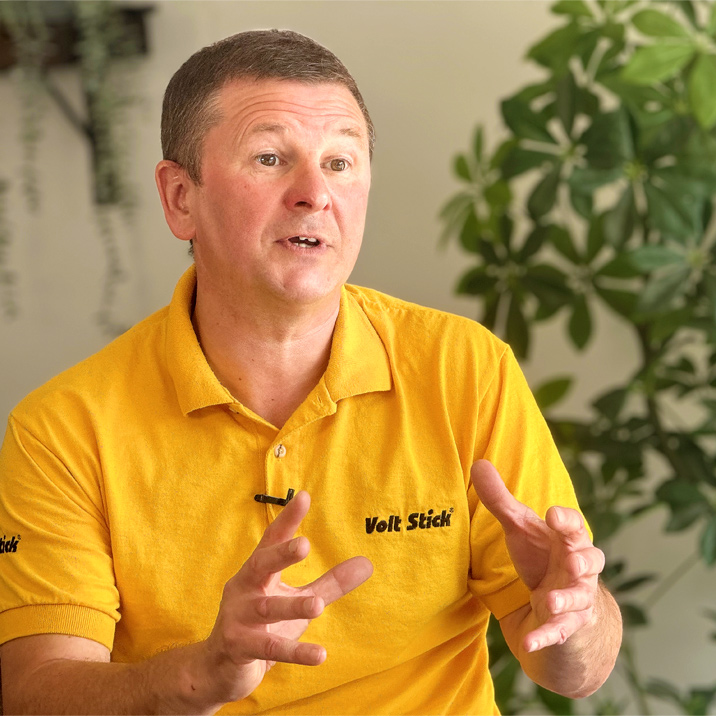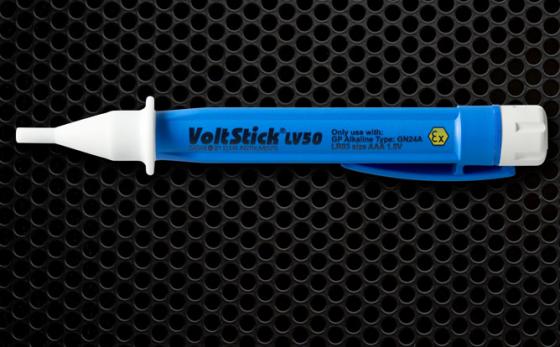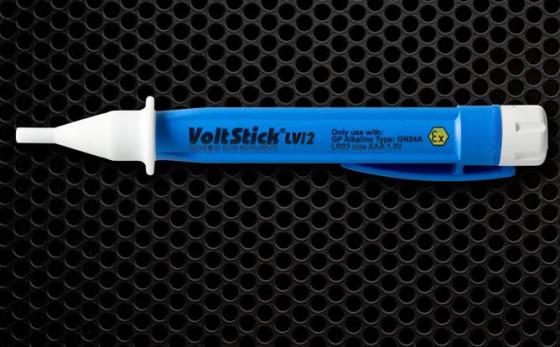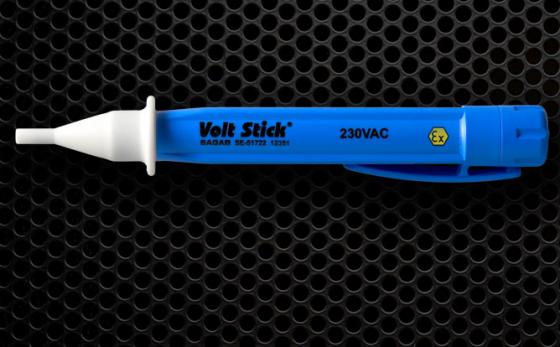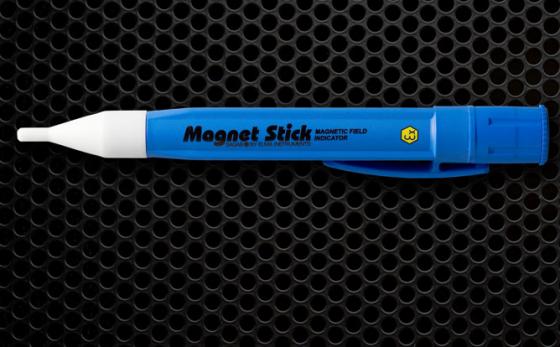Is your voltage detector intrinsically-safe?
Are you familiar with the rigorous standards for achieving Intrinsically-Safe Certifications such as ATEX, IECEX and NEC for tools & testing devices? Volt Stick highlights the need for ATEX certified voltage detectors in volatile / explosive environments.
There are worldwide standards for achieving Intrinsically-Safe Certifications such as ATEX, IECEX and NEC for tools & testing devices.
These certifications go beyond just a one-time test, they involve an ongoing evaluation of both the product and the manufacturing facility. In this process, even the components and batteries used in the device undergo thorough testing.
The importance of these certifications becomes evident in industries where the reliability and quality of intrinsically-safe products can have life-saving implications. For example, Volt Stick's non-contact voltage detectors are manufactured at a certified facility in Denmark, which also holds AS9100 Certification for producing components and products used throughout the aerospace and defence industries. The stringent testing and ongoing assessments ensure that only the most reliable components are used, guaranteeing future supply and the safety of those who rely on these critical tools.
Are your testers Intrinsically Safe? If not, this should spark your attention!..
Today, Volt Sticks are widely used across a variety of industries, including those with hazardous environments such as gas networks, coal mines and petrochemical plants. While the Volt Sticks themselves may not be hazardous, their environments can lead to explosive reactions due to potentially dangerous material combinations. To ensure safety, Volt Sticks have been developed and designed to be intrinsically-safe in these environments. This has resulted in a stringent testing and certification process, ensuring their safe operation.
What does intrinsically safe mean?
Intrinsically-Safe is an approach of design used to eliminate the possibility of a product becoming the source of ignition in an explosive environment.
Where is intrinsic safety needed?
Intrinsic safety is necessary for areas where electrical equipment will be used in potentially explosive atmospheres. These areas are known as hazardous areas or hazardous locations and are present in various industries. They can be found in oil refineries, gas storage & distribution, chemical processing, underground mining and other volatile environments and workplaces handling fine organic dusts such as grain or wood.
Potentially explosive atmospheres can contain a mixture of gases, vapours, mist, dust, or fibers that have the potential to ignite. It is crucial to ensure intrinsic safety in these environments to prevent accidents and maintain safety standards.
What is HAZLOC?
In the US and Canada, these locations are termed hazardous locations or HAZLOC, and devices qualified to be used in these locations are known as HAZLOC-rated devices. Regulations used to ensure safety in these locations are also known as HAZLOC Regulations, and the standards that these regulations use may vary depending on the country or region.
How can you make a device intrinsically safe?
There are three strategies for achieving Intrinsic Safety
- Containment involves containing the source of ignition in an explosion-proof enclosure.
- Segregation separates the ignition source from the hazardous material using isolation techniques
- Prevention is the preferred method, focusing on designing products and devices incapable of causing the heat or a spark which may have the potential to ignite hazardous materials.
"If you are a safety manager or an engineer working in a hazardous area or explosive environment, you need to ensure that any products or devices you take into that area are intrinsically-safe.
You need to check they have the correct certification."
Why are there different intrinsic safety standards?
The above strategies to eliminate or reduce the risk of electrical products causing explosions are accepted worldwide.
There are three main standards that use these strategies to address intrinsically safe practices:
- National Electrical Code's NEC (Section 500) for the United States and Canada
- ATEX covers the UK and European Union
- IECEx (Also known as NEC 505), created by the IEC with the intention of harmonising all standards, is widely recognised by the rest of the world.
The principals of ATEX, IECEx and NEC are the same, the main difference is how they each define hazardous areas.
What do ATEX, IECEx and NEC markings mean?
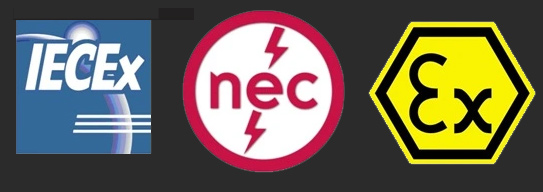
NEC (Section 500) organises hazardous areas into classes, divisions, groups and the temperature of the device.
- Class refers to the properties of the environment, specifically if it contains a hazardous vapor, dust, or fiber.
- Division refers to the likelihood of the hazardous substance producing an explosion if ignited. Group refers to the flammability properties of hazardous material in the environment.
- Temperature refers to the maximum surface temperature of any parts of the electrical equipment to be used in the hazardous environment.
Example of NEC Product Marking:
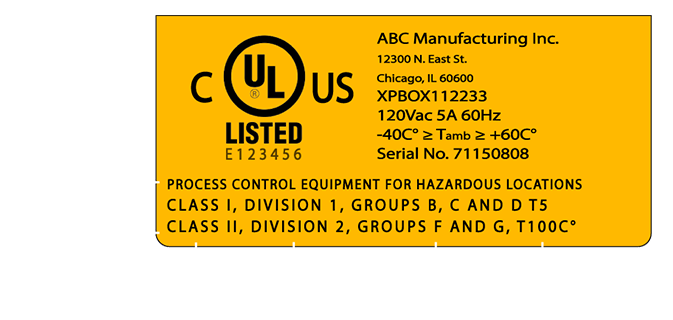
ATEX organises hazardous areas into zones and groups.
- Zone refers to the likelihood of the hazardous substance to be concentrated in the environment enough that it is explosive.
- Group refers to electrical equipment, which is organized into three categories of where it will be used and what gases, dusts etc. may be present.
IECEx system (also known as NEC Section 505) is widely based on the ATEX system and also uses zones and groups.
Example of ATEX/IECEx Product Marking:
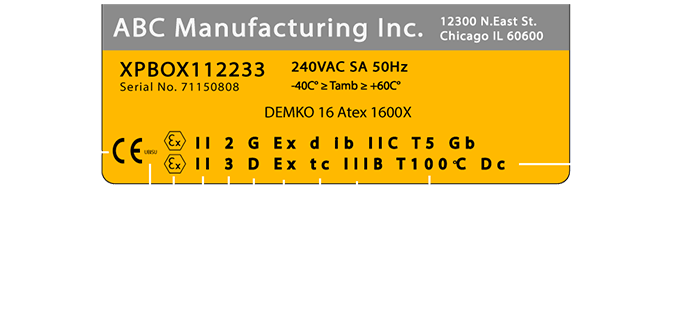
Each of the systems contain the same information but is presented in slightly different ways.
How does the new UKCA Ex differ from other standards?
After Brexit, the UK has introduced its own marking system called UKCA for Great Britain, including UKCA Ex (UKEX) marking requirements for products used in explosive atmospheres. This system replaces ATEX in Great Britain, but the UKEX requirements are similar to those in the ATEX directive. Products under the UKEX scheme must be assessed and certified by a UK Approved Body.
Does a device have to be intrinsically-safe to be used in a hazardous area?
If any equipment or devices (particularly electrical / electronic) are not intrinsically safe, they should be assumed to be capable of causing a spark and must not be brought onto site in explosive atmosphere environments. A product / device cannot simply 'self certify' as intrinsically-safe and must feature the ATEX / IECEx approval to confirm official certification.
Are there any other benefits to intrinsically-safe products?
Intrinsically Safe Certifications are some of the most stringent of standards to achieve. A factory making intrinsically-safe products must also be ATEX, IECEx or NEC certified. These factories will be making products for industries where consistency for reliability and quality could mean the difference between life and death.
Volt Stick's intrinsically safe non-contact voltage detectors are manufactured at NECAS in Denmark, an ATEX and IECEx certified facility that is also AS9100 Certified, meaning that it can produce components and products for the Aerospace and Defence Industries.
When a product is put forward for testing every component, including batteries, must be listed and tested. If any of the product's components or batteries were to change, due to EOL or long lead times, the product would require recertification. This means that only the best and most reliable components are used and that the future supply of those components are secured and guaranteed.
For many that use them, intrinsically-safe products become a critical tool, and if for some reason that tool would become unavailable it would seriously affect their procedures and ultimately their safety. Therefore, intrinsic certification ensures the safety, quality, reliability, accuracy and continuity of the product.
Find out more:
